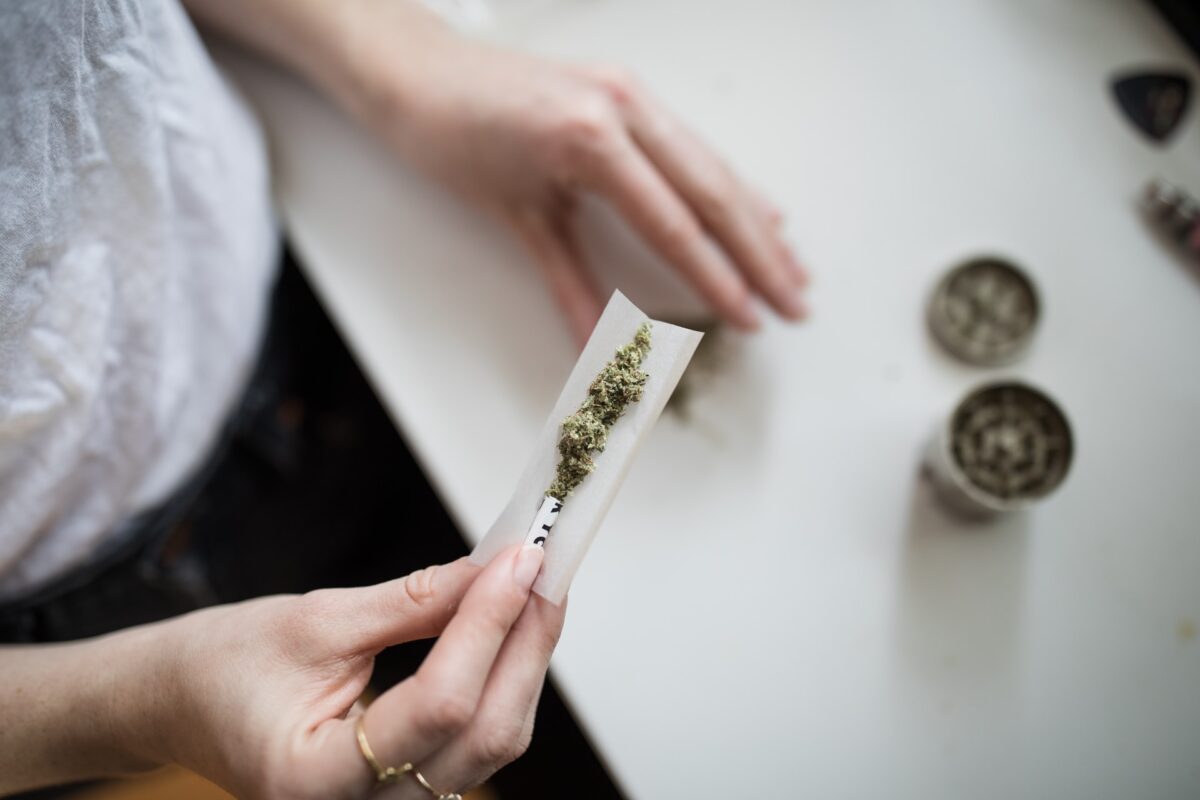Microdosing means using the smallest amounts of a substance to get the desired effects. People try microdosing cannabis to experience the benefits for which they were prescribed marijuana without getting psychoactive effects. This way they can function normally during the daytime.
Microdosing is commonly used by individuals with cannabinoid sensitivity, those who want to avoid weed intoxication, and people who are not sure about the exact amount of cannabis that would be most enjoyable for them.
Many individuals report that to avoid uncomfortable feelings from cannabis over consumption, they start with a minimum dosage and increase it as needed. Some of them say that small amounts of marijuana helped them to feel less anxious, but a larger dosage influenced the opposite. Also, microdosing helps to save money spent on treatment. You can check it yourself by reading a blog on AskGrowers.

How To Microdose Cannabis?
The amount of cannabis varies from person to person, so there is no simple answer that will work for everybody. Each person has a different sensitivity to experience the benefits of marijuana. Thus, the amount of weed differs depending on one’s tolerance, metabolism, physical condition, individual physiology, genetics, and previous experience of marijuana consumption. Doctors say that what will work well for one individual may be completely ineffective for another. Moreover, it can even produce some unwanted effects.
According to healthcare specialists, the main goal is to use the dose that provides the minimum noticeable effect. Most people who are interested in medical marijuana microdosing, start with 2.5 mg of (THC) tetrahydrocannabinol. In some cases, patients are prescribed even a smaller dosage of 1 mg. It doesn’t matter at what dosage you start, it’s more important to give it time before consuming more and to increase the amount very slowly.
Stick to your initial dosage for at least 3 days before increasing it. Then gradually raise your dosage until you experience the medication’s effect. Once you feel it works and you continually experience symptoms relief, identify this amount as your optimal level of microdosing THC. Sometimes people build up a tolerance to marijuana, so it gets needed to spend a few days without using cannabis and then to start microdosing again. Accurate microdosing is possible with legal marijuana products, such as oils, tinctures, and edibles, but not with vaping or smoking as it gets too difficult to define the amount of THC precisely.
When To Use Microdosing?
Researchers have revealed that excessive use of cannabis may harm health. The overuse of marijuana can cause dependence and affect an individual’s mental health. When THC provokes the high, the body starts producing a bigger amount of dopamine. This may lead to increased tolerance for the drug and doesn’t allow the medication to provide its benefits without a constant increase in dosage.
Moreover, according to the statistics, people struggling with severe mental disorders will feel high if they don’t use a microdose. It means the chances for psychotic episodes and erratic behaviors grow.
Although medical marijuana shows great results in the treatment of various diseases, defining the correct dosage is a common issue for many doctors. Fortunately, microdosing helps to find the right dosage for a patient. This method allows us to get all the appropriate results without intoxication and side effects caused by THC.
When it comes to cannabis, sometimes less is more. Microdosing is used by people when they don’t want to have psychoactive effects of weed that may be a problem for their daily life. Marijuana microdosing is not commonly used for recreational purposes or severe disease symptoms, but to slightly enhance physical and psychological well-being.
Microdosing can be tried to treat any condition for which you can get a medical marijuana card. The list of these medical conditions varies from state to state but may include the following: cancer, HIV, epilepsy, multiple sclerosis, Tourette Syndrome, and autism. Also, cannabis can be prescribed for PTSD, sleep disorders, depression as well as anxiety disorders. Patients may use medical marijuana in case they struggle with Crohn’s disease, chronic muscle spasms, glaucoma, Parkinson’s disease, and chronic pain.
Conclusion
Today, doctors don’t just prescribe the cannabis plant for treatment but provide it in various forms to make marijuana safer. Now a lot of research is conducted in this area. For instance, there was a study that researched the treatment of cancer patients who were not responsive to typical pain management strategies. Cancer patients were prescribed a cannabis-based medication called Nabiximols. Interestingly, the group of patients who took the smallest dosages of it felt the greatest pain relief. On the contrary, the pain got even worse in the group of people taking a bigger amount of the substance. So the microdosing of Nabiximols shows better results in pain management than a higher-than-average amount of the medication. Moreover, a higher dosage may even cause the opposite effect making patients high and unable to deal with their pain. Besides, Nabiximols is used to address other side effects of cancer treatment, such as nausea and vomiting.
Another research conducted on people who have PTSD (post-traumatic stress disorder) revealed that synthetic cannabinoid Nabilone is also more helpful in a small dosage. Scientists discovered that it relieves the symptoms of post-traumatic stress disorder more effectively when it’s taken in a microdose. Nabilone helped with insomnia and nightmares when it was prescribed in a small amount.
Scientists argue that higher doses of cannabis may lead to problems with focusing and anxiety. So that is why such medical conditions as depression, pain, and anxiety disorders are better treated with microdosing. Doctors also note that it can be a good method for people who consume marijuana for the first time. Microdosing helps to decrease the chance of negative experience if cannabis is introduced to a new person.

